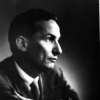Rudolf Arnheim

Rudolf Arnheim
Rudolf Arnheimwas a German-born author, art and film theorist, and perceptual psychologist. He learned Gestalt psychology from studying under Max Wertheimer and Wolfgang Köhler at the University of Berlin and applied it to art. His magnum opus was his book Art and Visual Perception: A Psychology of the Creative Eye. Other major books by Arnheim have included Visual Thinking, and The Power of the Center: A Study of Composition in the Visual Arts. Art and Visual Perception was revised, enlarged...
NationalityGerman
ProfessionArtist
Date of Birth15 July 1904
CountryGermany
All perceiving is also thinking, all reasoning is also intuition, all observation is also invention.
As one gets older, it happens that in the morning one fails to remember the airplane trip to be taken in a few hours or the lecture scheduled for the afternoon.
Seeing consists of the grasping of structural features rather than the indiscriminate recording of detail.
Entropy theory, on the other hand, is not concerned with the probability of succession in a series of items but with the overall distribution of kinds of items in a given arrangement.
In a land of immigrants, one was not an alien but simply the latest arrival.
A good documentary or educational film is not raw experience. The material has passed the mill of reason, it has been sifted and interpreted.
The experienced physician, mechanic, or physiologist looking at a wound, an engine, a microscopic preparation, "sees" things the novice does not see. If both, experts and laymen, were asked to make exact copies of what they see, their drawings would be quite different.
Television is a new, hard test of our wisdom. If we succeed in mastering the new medium it will enrich us. But it can also put our mind to sleep. We must not forget that in the past the inability to transport immediate experience and to convey it to others made the use of language necessary and thus compelled the human mind to develop concepts. For in order to describe things one must draw the general from the specific; one must select, compare, think. When communication can be achieved by pointing with the finger, however, the mouth grows silent, the writing hand stops, and the mind shrinks.
Order is a prerequisite of survival; therefore the impulse to produce orderly arrangements is inbred by evolution.
The ambition of instantaneous photography... was that of preserving the spontaneity of action and avoiding any indication that the presence of the picture taker had a modifying influence on what was going on.
When the thing observed... is seen as an agglomeration of pieces, the details lose their meaning and the whole becomes unrecognizable. This is often true of snapshots in which no pattern of salient shapes organizes the mass of vague and complex nuances.
A revolution must aim at the destruction of the given order and will succeed only by asserting an order of its own.
Since mechanically obtained randomness contains all kinds of possible permutations, including the most regular ones, it cannot be relied upon always to exhibit a pervasive irregularity.
The clarification of visual forms and their organization in integrated patterns as well as the attribution of such forms to suitable objects is one of the most effective training grounds of the young mind.